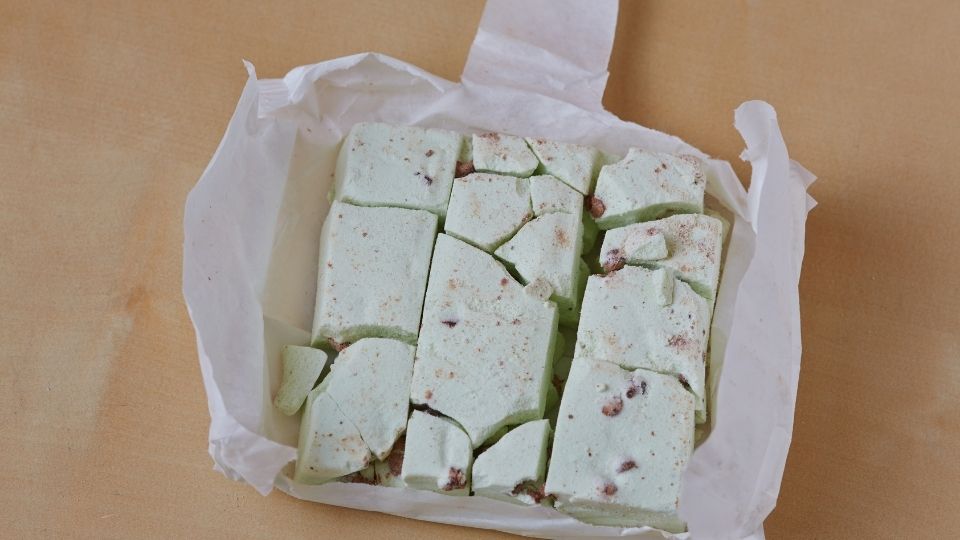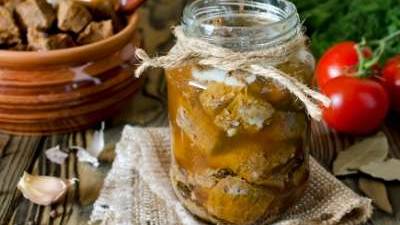Storing Eggs Safely
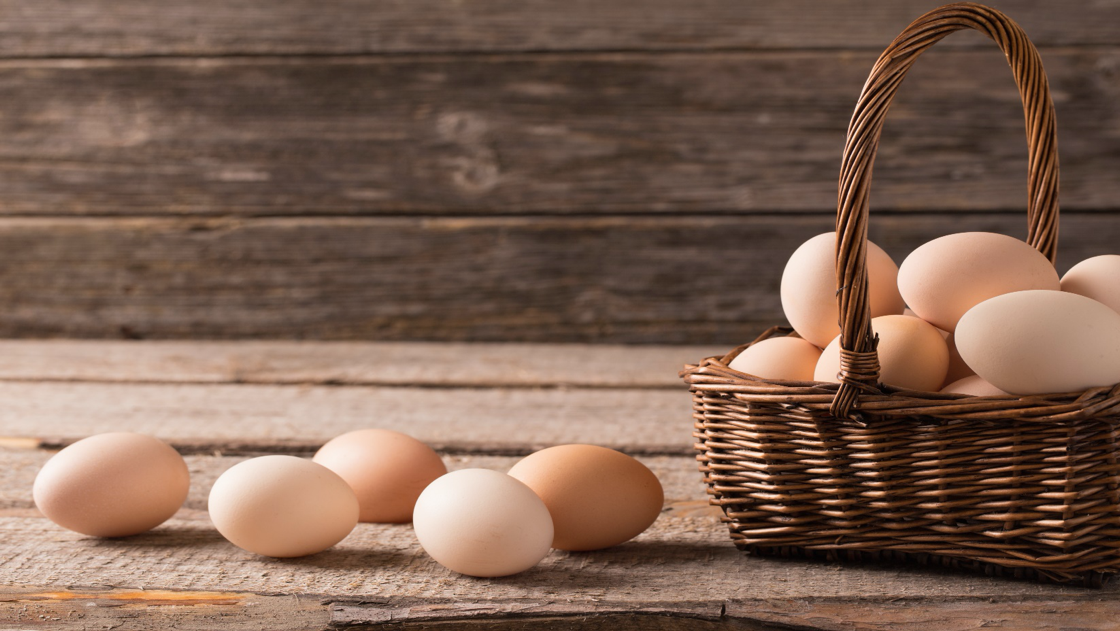
Source: Food Safety and Inspection Service, 2019
Storing eggs safely is important for your health and that of your family.
Many years ago, storing eggs was important due to lack of refrigeration or other safe preserving methods. From this time came an egg storage method that is not recommended today due to advancements and knowledge of egg safety. One method that has become very popular is storing eggs in lime water, also called “water glassing.” This method is not considered safe, nor is it a recommended method to store eggs for the long term.
Water Glassing Is Dangerous
Water glassing eggs was popular in the early 1900s. It was thought that eggs were sterile inside the hen and that all bacteria came through the shell after the eggs were laid. Research shows that Salmonella enteritidis can contaminate eggs as they are formed inside the hen’s reproductive organs, and there is no way a person can know if it is there.
This method requires using unwashed eggs that are probably coming from smaller flocks. A study at Pennsylvania State University showed that small home flocks have a much higher incidence of Salmonella than large commercial operations (Mulhollem, 2016).
Another concern is using lime water and the fact that it could seep through the eggshell.
The risk of storing eggs for long periods includes loss of nutrients, several oxidative reactions, changes in protein functionality, and a strong, bitter taste from time to time.
What Is the Best Storage for Eggs?
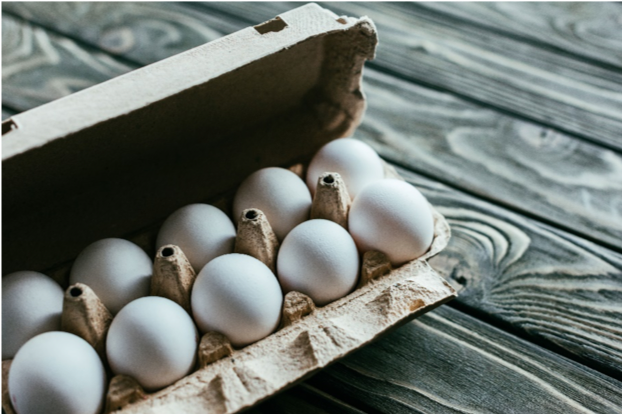
In a comprehensive study, Deana Jones, Agricultural Research Service food technologist, compared how eggs are stored in Europe and the U.S., along with two other common storage techniques. Results showed the U.S. approach is most effective; refrigeration is best for safety and quality (O’Brien, n.d.).
Refrigeration
Not only do eggs need to be refrigerated directly after harvesting, but they need to be refrigerated at the correct temperature. Ensure your fridge is set at 40 ˚F or below (not freezing), and keep the eggs in their carton. They should also be stored in the coldest part of the refrigerator and not kept in the refrigerator’s door, which tends to be warmer.
A cold egg left out at room temperature can sweat, facilitating the movement of bacteria into the egg and increasing bacterial growth. Refrigerated eggs should not be left out more than 2 hours.
Freezing
Another method of storing eggs is freezing. The National Center for Home Food Preservation (n.d.) states: “Select fresh eggs and break each egg separately into a clean saucer. Examine each for freshness and remove any pieces of shell before mixing with other eggs.”
Freezing Whole Eggs
- Mix well yolks and whites. (Do not whip air into the eggs.)
- To prevent graininess, add 1½ tablespoons sugar, or 1½ tablespoons corn syrup, or ½ teaspoon of salt per cup of whole eggs, depending on the intended use of the eggs.
- Strain the egg mixture through a sieve or colander to improve uniformity.
- Place in the freezer container with a ½-inch headspace. Seal and freeze.
Another method of freezing the whole-egg mixture is to use ice cube trays.
- Measure 3 tablespoons of the egg mixture into each compartment. Freeze until solid.
- Remove frozen cubes and package them in moisture-vapor-resistant containers. Seal and freeze.
Three tablespoons of egg mixture equals one whole egg. If ice trays are smaller, use 1 tablespoon per compartment and follow the same directions already outlined. Use three cubes to equal one egg.
Freezing Egg Yolks
- Separate eggs.
- Stir yolks gently.
- To prevent graininess, add 1½ tablespoons sugar, or 1½ tablespoons corn syrup, or ½ teaspoon of salt per cup of yolks, depending on intended use.
- Strain through a sieve.
- Package in freezer-safe container, allowing ½-inch head space. Seal and freeze.
One tablespoon of yolk equals one egg yolk.
Freezing Egg Whites
- Gently mix egg whites; do not whip.
- Strain through a sieve. No sugar or salt is needed.
- Package in freezer-safe container, leaving ½-inch headspace. Seal and freeze.
Two tablespoons of egg white mixture equals one egg white.
Freeze-Drying
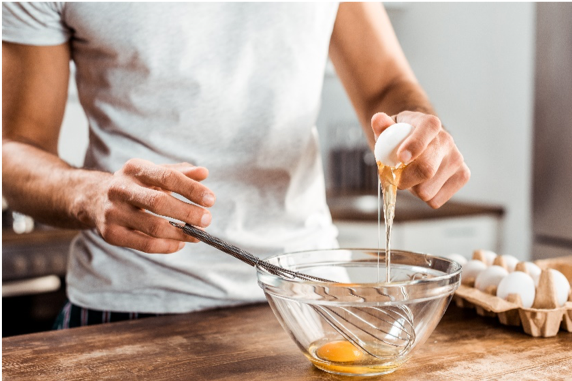
Another method of storing eggs is to freeze-dry cooked eggs.
Harvest Right, a brand name of home freeze dryers, states:
- For cooked eggs, simply scramble as normal, transfer to trays, and freeze-dry. When cooking, you can add cheese, peppers, and other seasonings prior to freeze drying.
- For raw eggs, beat them and pour directly into the trays. When the freeze dry cycle is over, you can blend the eggs into powder, but [it] isn’t necessary. They store just fine without being powdered. Raw freeze-dried eggs are still raw when rehydrated and must either be refrigerated or cooked immediately.
Source: Discover Home Freeze Drying by Harvest Right. Used with permission.
Home Food Dehydrators
Home food dehydrators will not reach temperatures high enough to dry properly. It is recommended not to use this type of dehydrator to dry eggs.
Conclusion
Whatever preservation method you choose, do not use water glassing for egg storage. Also, remember that Salmonella enteritidis bacteria is not killed by freeze-drying or freezing. When using the stored eggs, cook them thoroughly to kill the bacteria that may still be present. Do not use the stored eggs in uncooked products such as smoothies, eggnogs, and so forth.
Resources and References
-
Food Safety and Inspection Service (2019). Shell eggs from farm to table. U.S. Department of Agriculture (USDA).
-
Harvest Right (2022, April 15). Eggs. https://harvestright.com/blog/2022/eggs/
-
Harvest Right. (n.d.). Discover home freeze drying. https://harvestright.com/product/discover-home-freeze-drying-recipe-book/
-
Kansas State University Extension. (2020, December). Storing eggs safely. You Asked It! https://www.rrc.k-state.edu/newsletter/doc/december2020.pdf
-
Mulhollem, J. (2016). Eggs from small flocks more likely to contain Salmonella enteritidis [Fact sheet]. Penn State Extension. www.psu.edu/news/research/story/eggs-small-flocks-more-likely-contain-salmonella-enteritidis/
-
National Center for Emerging and Zoonotic Infectious Diseases, Division of Foodborne, Waterborne, and Environmental Diseases. (2023, March 8). Salmonella and eggs. Centers for Disease Control and Prevention (CDC). www.cdc.gov/foodsafety/communication/salmonella-and-eggs.html
-
National Center for Home Food Preservation. (n.d.). Freezing eggs. In E. L. Andress and J. A. Harrison (Eds.), So easy to preserve (6th ed., Bulletin 989, 2014). University of Georgia Extension.
-
National Center for Infectious Diseases, Division of Bacterial and Mycotic Diseases. (1992, revised 2016). Salmonella enteritis Infection. CDC Wonder, Centers for Disease Control and Prevention. https://wonder.cdc.gov/wonder/prevguid/p0000003/p0000003.asp
-
O-Brien, D. (n.d.). How we store our eggs—and why. Tellus, U.S. Department of Agriculture (USDA). https://tellus.ars.usda.gov/stories/articles/how-we-store-our-eggs-and-why/#:~text=The%20U.S.%20Department%20of%20Agriculture,%20after%20%20
-
Penn State Extension. (n.d.). Product quality. https://extension.psu.edu/animals-and-livestock/poultry/product-quality
-
Schoop, E. Denmon, A. E., & Onopa, J. (2020, July 27). What do I do with all these eggs? [Fact sheet]. Penn State Extension. https://extension.psu.edu/what-do-i-do-with-all-these-eggs
Published September 2023
Utah State University Extension
Authors
Christine E. Jensen, USU Extension Associate Professor, Emery County
Charlotte P. Brennand, former USU Extension Food Safety Specialist
Related Research



